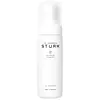What's inside
What's inside
 Key Ingredients
Key Ingredients

No key ingredients
 Benefits
Benefits

 Concerns
Concerns

 Ingredients Side-by-side
Ingredients Side-by-side

Water
Skin ConditioningGlycerin
HumectantSodium Cocoyl Isethionate
CleansingSorbitol
HumectantDisodium Lauryl Sulfosuccinate
CleansingSodium Chloride
MaskingPhenoxyethanol
PreservativeSaccharomyces/Grape Ferment Extract
Skin ConditioningLimonene
PerfumingXanthan Gum
EmulsifyingParfum
MaskingCopper Gluconate
Skin ConditioningLinalool
PerfumingEthylhexylglycerin
Skin ConditioningDisodium EDTA
Pyrus Malus Fruit Extract
Skin ConditioningPhospholipids
Skin ConditioningChlorella Vulgaris/Lupinus Albus Protein Ferment
Skin ConditioningPectin
Emulsion StabilisingWater, Glycerin, Sodium Cocoyl Isethionate, Sorbitol, Disodium Lauryl Sulfosuccinate, Sodium Chloride, Phenoxyethanol, Saccharomyces/Grape Ferment Extract, Limonene, Xanthan Gum, Parfum, Copper Gluconate, Linalool, Ethylhexylglycerin, Disodium EDTA, Pyrus Malus Fruit Extract, Phospholipids, Chlorella Vulgaris/Lupinus Albus Protein Ferment, Pectin
Water
Skin ConditioningSodium Cocoamphoacetate
CleansingLauryl Glucoside
CleansingGlycerin
HumectantAloe Barbadensis Leaf Juice
Skin ConditioningSodium Cocoyl Glutamate
CleansingSodium Lauryl Glucose Carboxylate
CleansingPanthenol
Skin ConditioningUrea
BufferingLactobacillus/Portulaca Oleracea Ferment Extract
AntioxidantCitric Acid
BufferingBenzyl Alcohol
PerfumingPhenoxyethanol
PreservativePotassium Sorbate
PreservativeSalicylic Acid
MaskingLeuconostoc/Radish Root Ferment Filtrate
AntimicrobialTocopherol
AntioxidantPantolactone
HumectantSodium Benzoate
MaskingWater, Sodium Cocoamphoacetate, Lauryl Glucoside, Glycerin, Aloe Barbadensis Leaf Juice, Sodium Cocoyl Glutamate, Sodium Lauryl Glucose Carboxylate, Panthenol, Urea, Lactobacillus/Portulaca Oleracea Ferment Extract, Citric Acid, Benzyl Alcohol, Phenoxyethanol, Potassium Sorbate, Salicylic Acid, Leuconostoc/Radish Root Ferment Filtrate, Tocopherol, Pantolactone, Sodium Benzoate
 Reviews
Reviews

Ingredients Explained
These ingredients are found in both products.
Ingredients higher up in an ingredient list are typically present in a larger amount.
Glycerin is already naturally found in your skin. It helps moisturize and protect your skin.
A study from 2016 found glycerin to be more effective as a humectant than AHAs and hyaluronic acid.
As a humectant, it helps the skin stay hydrated by pulling moisture to your skin. The low molecular weight of glycerin allows it to pull moisture into the deeper layers of your skin.
Hydrated skin improves your skin barrier; Your skin barrier helps protect against irritants and bacteria.
Glycerin has also been found to have antimicrobial and antiviral properties. Due to these properties, glycerin is often used in wound and burn treatments.
In cosmetics, glycerin is usually derived from plants such as soybean or palm. However, it can also be sourced from animals, such as tallow or animal fat.
This ingredient is organic, colorless, odorless, and non-toxic.
Glycerin is the name for this ingredient in American English. British English uses Glycerol/Glycerine.
Learn more about GlycerinPhenoxyethanol is a preservative that has germicide, antimicrobial, and aromatic properties. Studies show that phenoxyethanol can prevent microbial growth. By itself, it has a scent that is similar to that of a rose.
It's often used in formulations along with Caprylyl Glycol to preserve the shelf life of products.
Water. It's the most common cosmetic ingredient of all. You'll usually see it at the top of ingredient lists, meaning that it makes up the largest part of the product.
So why is it so popular? Water most often acts as a solvent - this means that it helps dissolve other ingredients into the formulation.
You'll also recognize water as that liquid we all need to stay alive. If you see this, drink a glass of water. Stay hydrated!
Learn more about Water